In this article, you’ll learn how to make a SWOT table with the help of a step-by-step guide. Since you’ll find it easier to follow the process with the help of an example, we’ll make the SWOT table for a major company - let’s say Amazon. Let’s begin:
How Do You Make a SWOT Table?
Here are the steps you need to follow to make a SWOT table:
Identify Whom Are You Making the SWOT Table For
The first step in making a SWOT table is to identify whom the SWOT table is for. You can make a SWOT table for an individual or a company. For example, you can make a SWOT table for yourself. You can also make a SWOT table for your company or another company.
Example:
In this guide, we’re making a SWOT table for a company - Amazon - as an example.
State the Goal for Doing the SWOT Analysis
SWOT analysis is a tool you can use to analyze factors that support or oppose the achievement of a goal. Without a goal or a decision to make, doing a SWOT analysis is pointless.
For a company, a goal could be:
- Becoming more profitable
- Entering a new market
- Recovering from a setback
- Capturing market share
- Developing an R&D strategy
For an individual, a goal could be:
- Improving financial situation
- Addressing health goals
- Developing relationships
- Advancing career
As you can see, SWOT analysis can help address a wide range of personal, professional, or organizational goals.
Example:
The goal for Amazon in this example is to maintain or increase profitability despite the effects of the pandemic.
Draw a 2x2 Table and Label Rows, Columns, and Cells
In this step, you’ll draw the SWOT table. The SWOT table is a 2x2 grid. This means that the grid has two rows and two columns.

After you draw the grid, label the columns as follows:
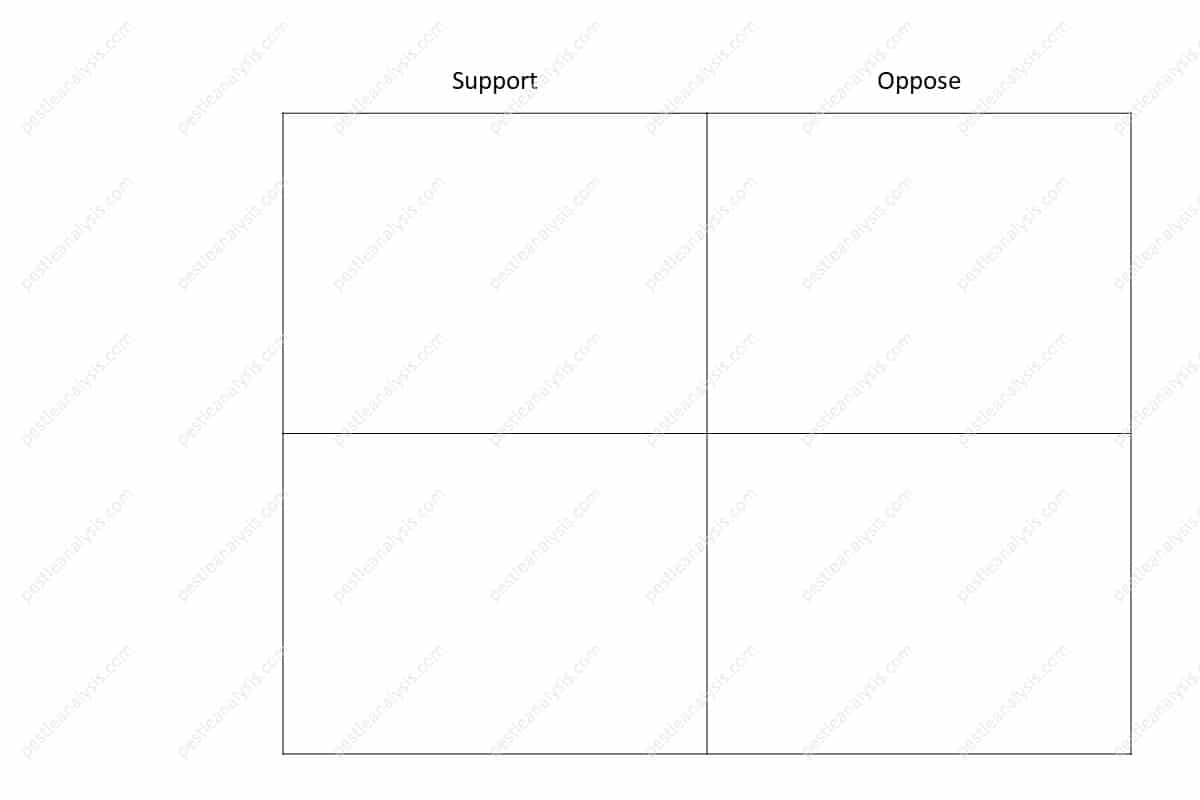
Next, label the rows as shown in the diagram:
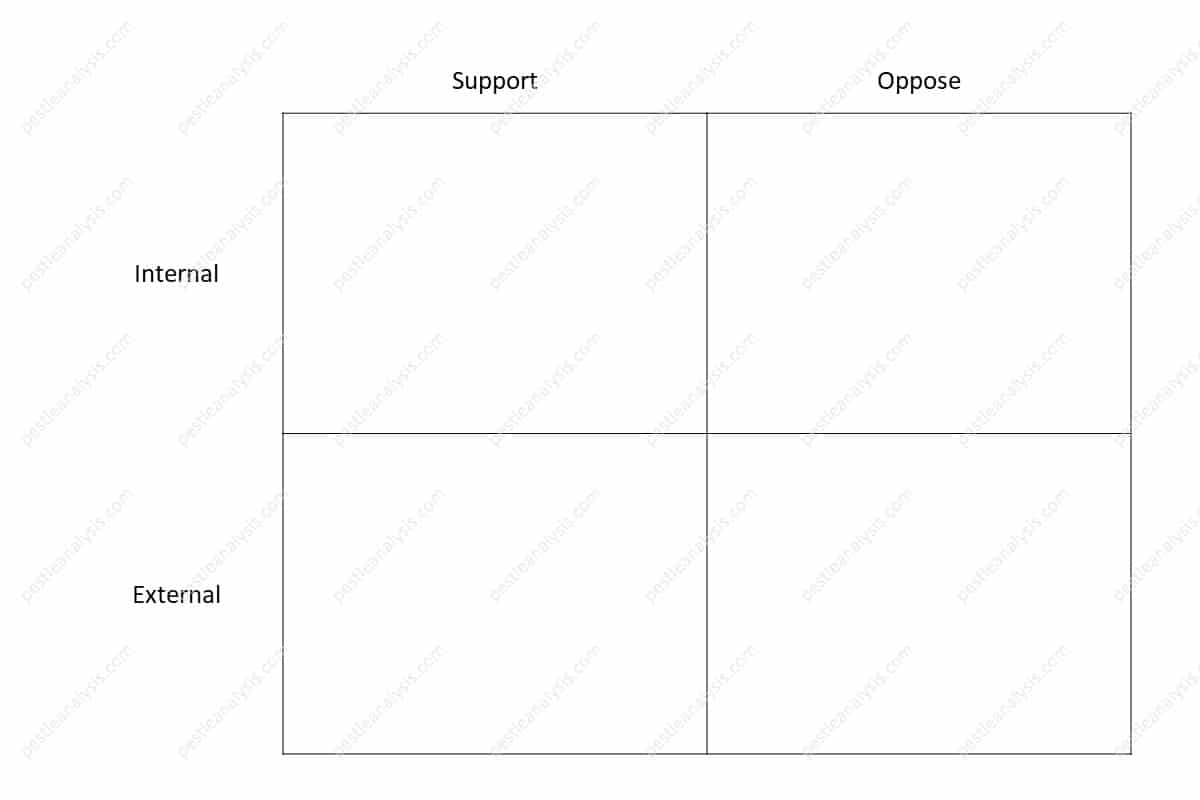
Finally, label each cell in the grid in the following manner:
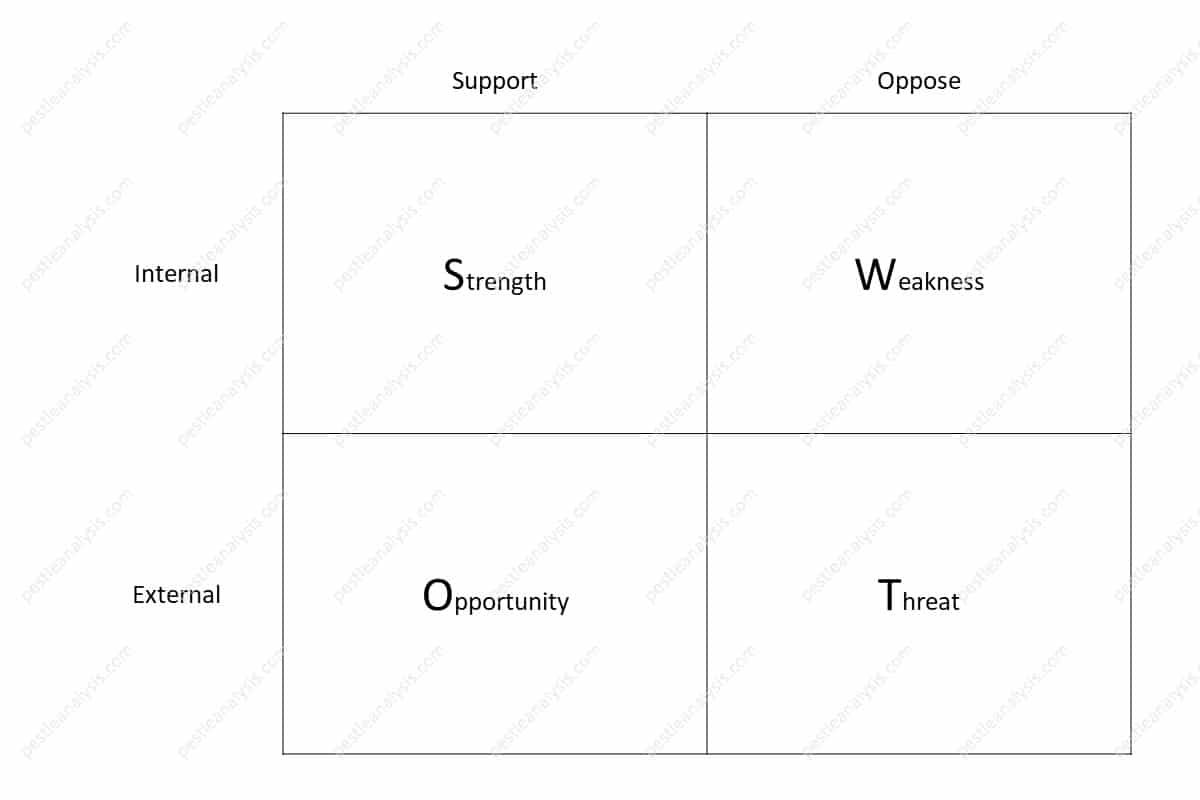
In the next steps, you’ll learn how to fill each of these cells.
Find the Internal Supportive Factors
In the context of SWOT analysis, a strength is an internal factor that supports the goal. Also, an internal factor is any aspect that can be controlled.
For example, imagine that it’s snowing outside. Although you cannot control the weather, you can control the way you dress. Therefore, the weather is an external factor and the way you dress is an internal factor.
Example:
For Amazon, internal factors that support Amazon in maintaining or increasing profitability are:
- Amazon’s Online Platforms
- Market Share
- Diversified Business Portfolio
- Board of Directors
- Robust Supply Chain
Amazon has complete control over these factors. And these factors are supporting Amazon’s goal. Therefore, these are Amazon’s strengths. Let’s fill these in the SWOT table.
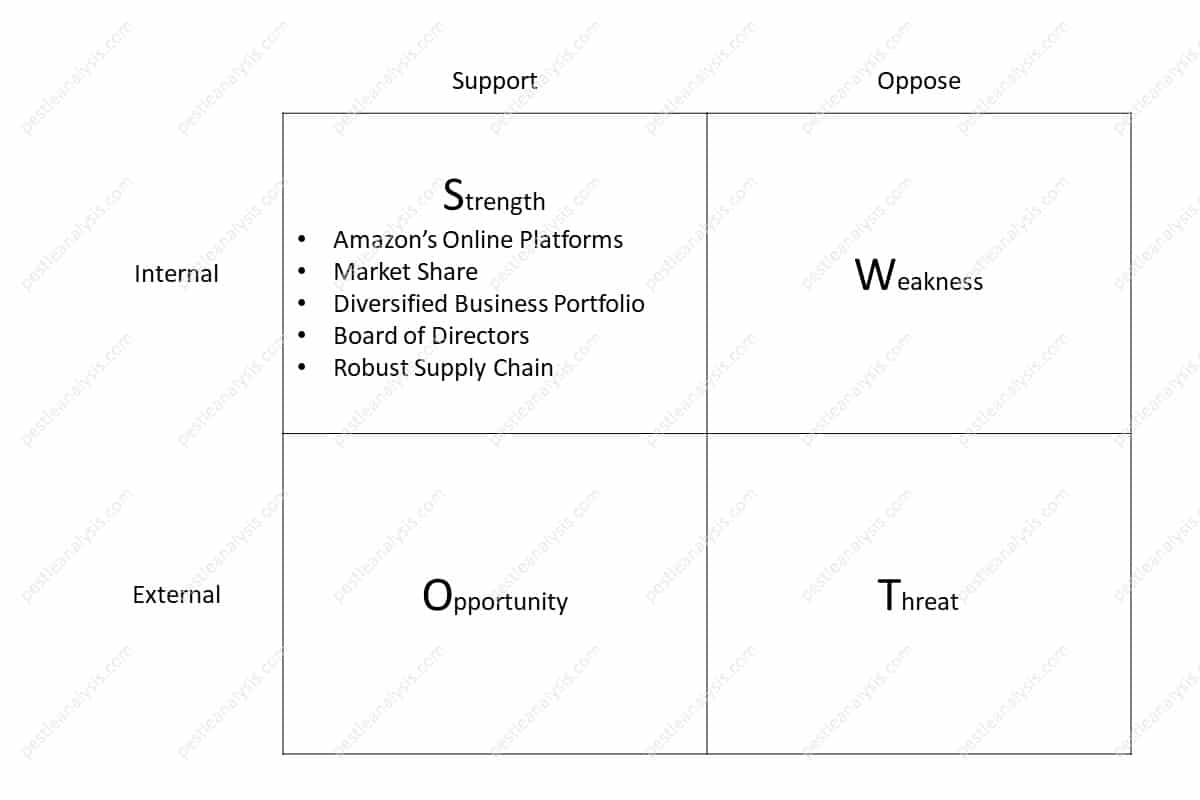
Discover the Internal Opposing Factors
From its position in the SWOT table, you can see that weakness is an internal factor that opposes the goal. These are typically areas where:
- existing capabilities must be improved, or
- new capabilities must be built.
Example:
In the case of Amazon, internal factors that oppose Amazon’s goal for our SWOT analysis are:
- Relationship with Sellers
- Morale of Employees
- Work Culture
- Control Over Quality
- Lack of Brick-and-Mortar Presence
Leaving the above concerns unaddressed would oppose Amazon’s goal. Also, addressing these factors is well within Amazon’s control. Therefore, these factors are Amazon’s weaknesses. Let’s fill this in the SWOT table.
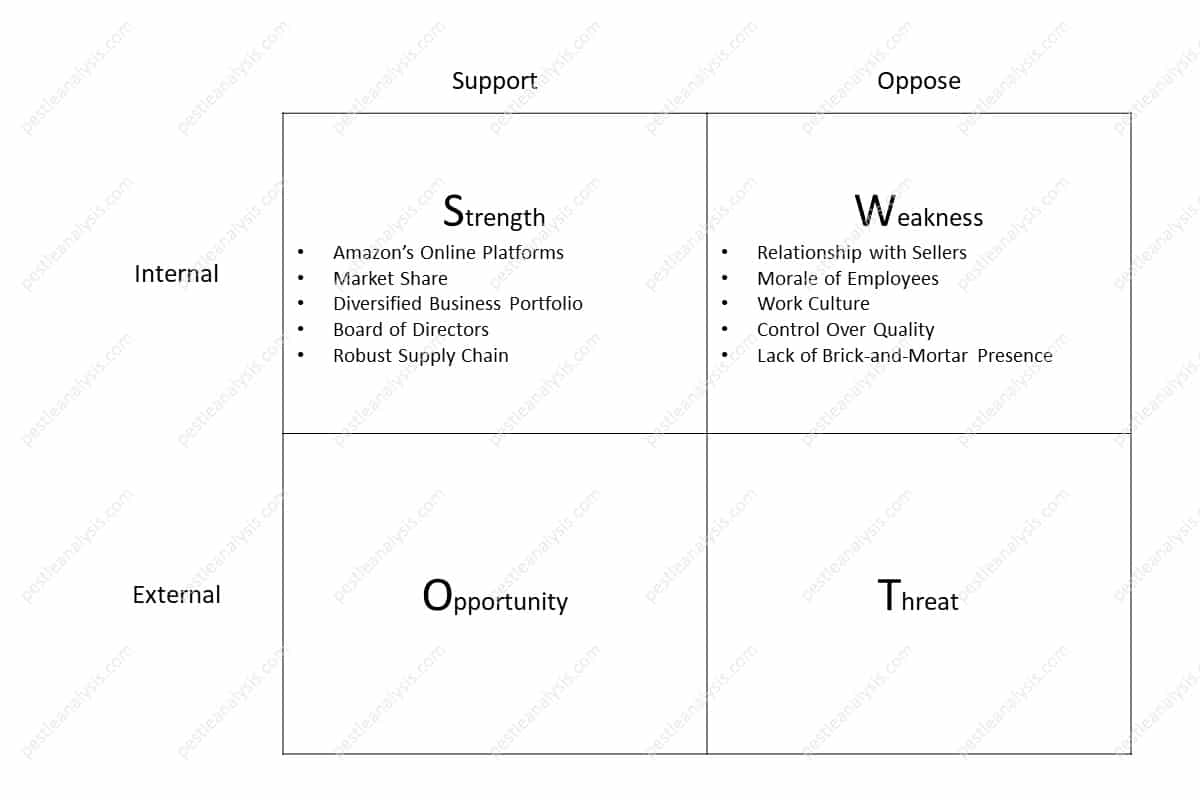
Spot the External Supportive Factors
A lot of people get confused between an opportunity and a strength. An easy way to tell them apart is by looking at how much control the individual or the organization has over that factor.
For example, if you’re planning to go for a hike, having pleasant weather is an opportunity and not a strength. The reason is you have no control over the weather.
At the same time, having pleasant weather supports your goal to go for a hike. Therefore, pleasant weather is an opportunity to go for a hike.
Also consider this:
For a hiker, having good cardiovascular endurance is a strength. On the flip side having poor cardiovascular endurance is a weakness. But a person with poor cardiovascular fitness can improve that through action.
This brings us to another distinction - with effort, you can eliminate weaknesses and nurture strengths.
One more thing: You can rely on your strengths to make long-term plans. However, opportunities are fleeting - they do not last for a long time. Therefore, opportunities are better suited to short-term plans.
Keeping these aspects in mind will help you differentiate between a strength and an opportunity.
Example:
Let’s look at some factors that aren’t under Amazon’s control but ended up supporting Amazon’s goals:
- Internet Penetration
- Prevalence of Smart Phones
- Shift to Online Shopping
- Covid Related Lockdown Measures
- Availability of Cheap Labor
These factors aren’t within Amazon’s control. But you can see that Amazon has benefitted from these factors. Therefore, these are Amazon’s opportunities. Let’s fill them in the SWOT table:
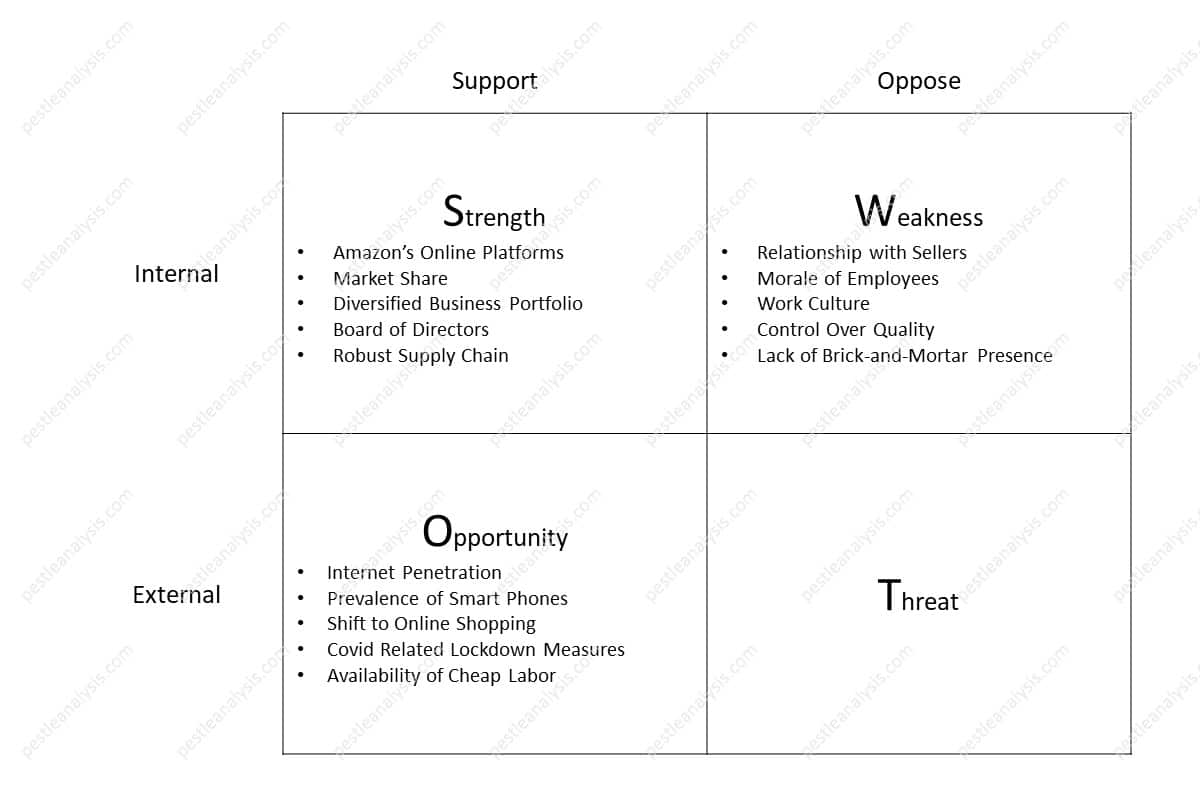
Pinpoint the External Opposing Factors
The last cell in the SWOT table is for the threats - external factors that oppose the goal. You may have some trouble telling the difference between a threat and a weakness. So, let’s look at some ways to do that.
A threat is an external factor. In other words, it’s an aspect beyond direct control. Therefore, all you can do in the face of a threat is to manage the risks or address it through other channels.
Unlike a weakness, which you can overcome or eliminate through direct action, you cannot remove a threat from the picture through direct action.
For example, Joe Biden’s proposal to waive off intellectual property rights for Covid vaccines is a threat to vaccine manufacturers. The pharma companies can’t directly intervene in policy formation and would have to move through other channels to exert influence over the matter.
So, if the solution to an opposing factor is in the hands of another agent, then you can consider that aspect a threat.
Example:
In Amazon’s case, we have a few factors that are opposing Amazon’s goals. Amazon does not have direct control over these factors. So, they must either address them indirectly or must prepare the company to bear the brunt of the risk as best as it can.
Here are a few such factors:
- Regulatory Bodies
- Political and Economic Instability
- Anti-Trust Lawsuits and Other Litigations
- Competition from Other Companies
- Geography, Demographics, and Culture
Let’s fill these factors into the SWOT table.
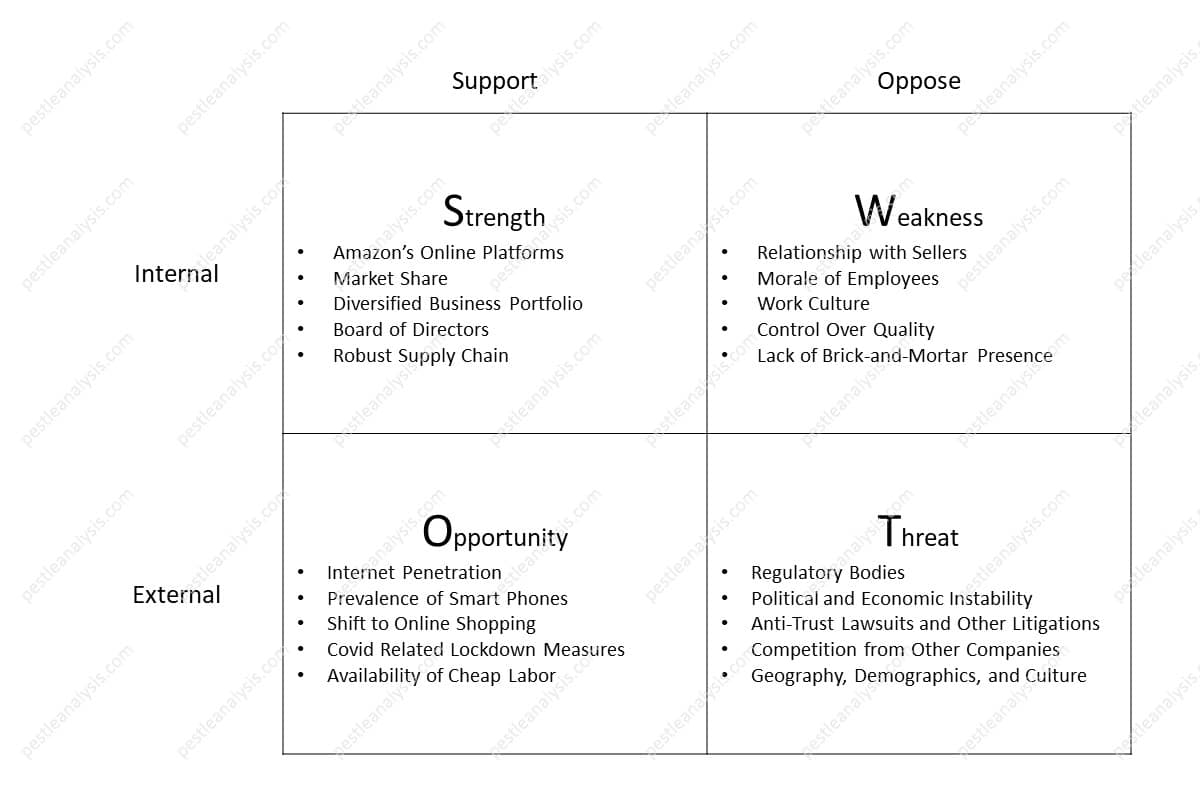
Now, the SWOT table is complete.
Next Steps
Now that you know how to make a SWOT table, you can look at our extensive library of SWOT Analysis Examples. Here you’ll find in-depth SWOT analysis for major companies and industries.
And if you would like an in-depth tutorial on identifying strengths, weaknesses, opportunities, and threats, you can see our SWOT Analysis Template for more information. In this article, you will find several ways to analyze the four parameters of SWOT analysis.
However, if you want comprehensive coverage of SWOT analysis fundamentals, you can read our article on SWOT Analysis here.


